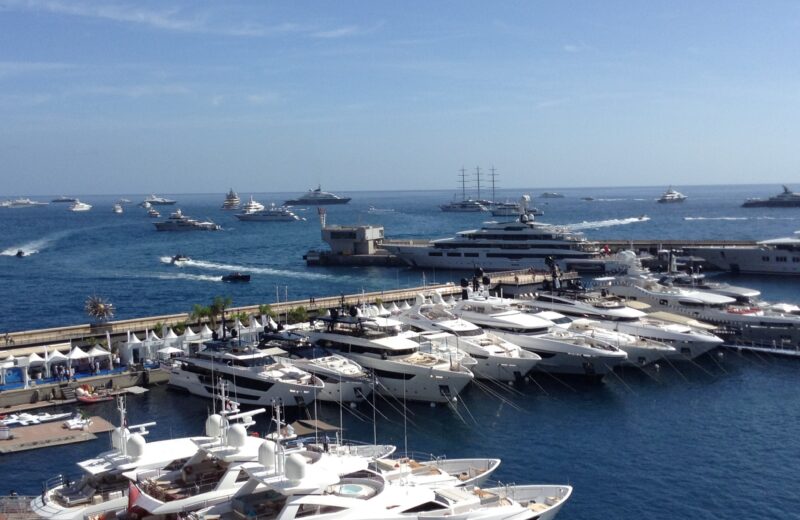Flagship: New Superyacht Eco Association Index set to make its mark

The imminent global threat of climate change brings a rising tide of natural disasters, dwindling resources and disappearing species that requires action from all industries to curb. Superyachting is no different. Marine traffic is responsible for 18% of global emissions annually, whilst superyachting is a minute part of that total – we all know how the industry has been portrayed in mainstream media.
In an effort to centralise superyachting data and assert the need for greener operation, Credit Suisse has partnered with Yacht Club de Monaco (YCM) to create the Superyacht Eco Association (SEA) Index, a measurable rating system based on vessel carbon emissions.
Credit Suisse, Head Aviation & Yacht Finance, Michel Buffat, told Superyacht Investor: “Under our lead, together with the YCM, the index was created in collaboration with a specialist consultant firm, the engineers from Nobiskrug and checked by Prof. Dr.-Ing. Moustafa Abdel-Maksoud. It is the bank’s best interest that this new index becomes the industry standard.”
Using an initial data set of 130 vessels, SEA calculates the reference line, which represents the world fleet average and serves as comparable for the l rating of individual yachts. This will be based on a five-star system. The reference line was tested against another data sample of roughly 1,100 yachts. Although this may appear a small number, Buffat told SYI he can safely say that it represents the average emission level of the global yacht fleet.
New index becomes the industry standard
“The reason is that we tested it against a second, completely independent sample of 1,100 yachts, which is about 50% of the global fleet over 40m. The curve derived from the second, much larger sample, was very much the same. Secondly, to rate a yacht, we apply bands around that reference line of 25% (percentiles). Those are rather wide, so even if the ‘true’ curve with the ‘real’ average of the global fleet is slightly different, it will create little change,” said Buffat.
The idea can be likened to the Poseidon Principles launched by a group of marine finance banks to establish a means of collecting, assessing and disclosing emissions data. Aligning their investment portfolios with owners shows commitment to the decarbonisation of their fleets. Now, the SEA Index plans to go even further than just emissions ratings to become a multifaceted sustainability index.
“However, like the Poseidon Principles and other initiatives, the challenge the SEA Index faces is that it is voluntary,” William MacLachlan, partner, HFW told SYI. “It does not set down any standards or seek to be prescriptive, rather it aims to encourage technological innovation and technical development. It will be interesting to see how the SEA Index operates to institute cultural change amongst the designers, builders, owners and other key stakeholders in the yachting industry.
“For now, the SEA Index seems to be limited to yachts of 40m plus and it would, in our opinion, be interesting to see its expansion to yachts of all sizes. Industry participants are likely to watch with interest the level of update before we see mass participation,” added MacLachlan.
Shipyards could learn from the SEA Index
Franz Bose, chief marketing officer, Silent Yachts, specialist solar catamaran builders, told SYI he would be happy to see his company’s yachts featured on the index. “We support and advocate every measure that strives for lowering the carbon footprint and increasing awareness in the yachting industry. There is always room for improvements in all areas related to the construction of yachts, which might be something shipyards could learn from each other and the SEA Index.”
As greener yachting becomes more desirable, VesselsValue’s head of superyachts, Sam Tucker, said we will see a value differential between the higher and lower rated vessels. “Environmental efficiency and being more ‘green’ are desirable features for vessels and are thus becoming an increasingly important consideration for consumers.” And the rating system will be a good way of objectifying each vessels’ impact.
Tucker said: “Most global industries, including the superyacht industry, are responsible for some level of emissions. Whilst emissions are considered as ‘bad’, at present, having some emissions is better than no emissions.”
Zero emissions means that there would be very few superyachts in existence, meaning that all the money currently coming from vessels would not be there to benefit the global economy, said Tucker. He noted: “It would be interesting to compare the amount of global GDP [Gross Domestic Product] generated as a result of 1t of carbon from yachting against other sectors.”
Nonetheless, a reduction in carbon emissions is here already and needs to continue to take place in order to combat climate change. That requires regulation and an industry standard, which the SEA Index hopes to become.
Contributors:
- Michel Buffat, Head Aviation & Yacht Finance, at SEA Index creators Credit Suisse
- William MacLachlan, Partner and Lawyer, HFW
- Sam Tucker, Head of Superyachts, VesselsValue
- Franz Bose, Chief Marketing Officer, Silent Yachts
Subscribe to our free newsletter
For more opinions from Superyacht Investor, subscribe to our email newsletter.

